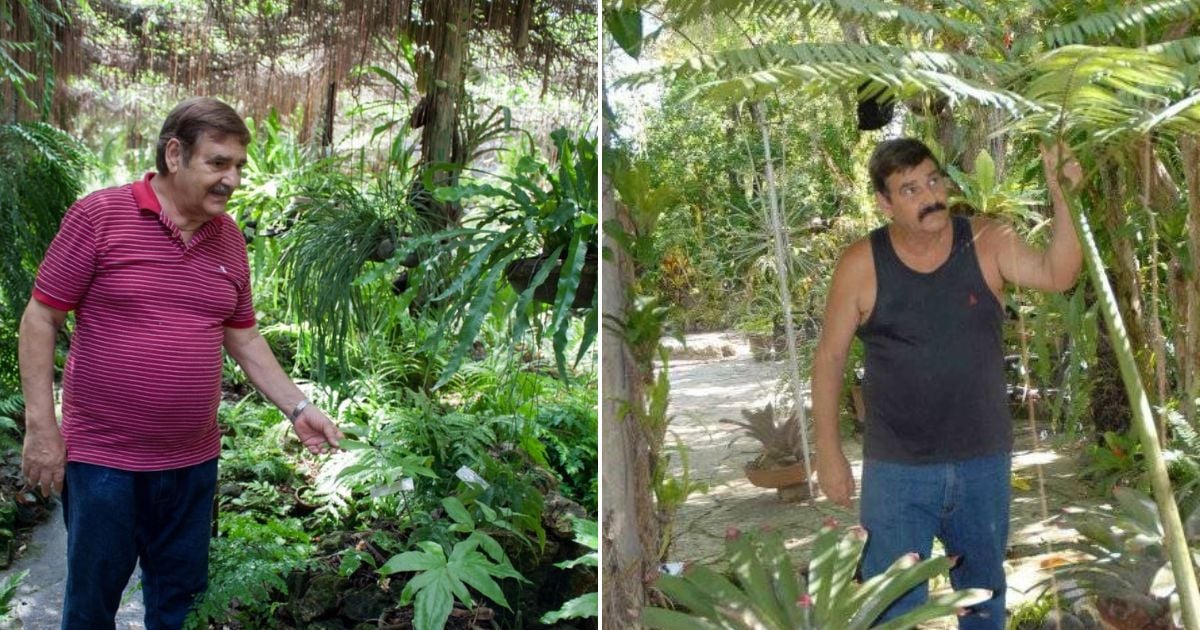Renowned botanist and artist, Manuel García Caluff, passed away at the age of 79 in Santiago de Cuba. He left an indelible mark on Cuban science as the visionary behind the Fern Garden, a green sanctuary he managed for four decades in El Caney. This contribution solidified his status as a pivotal figure in the study of Cuba's flora. The news of his passing was confirmed by the Eastern Center for Ecosystems and Biodiversity (Bioeco), where Caluff devoted his extensive and fervent scientific career.
Bioeco commemorated Caluff as a "passionate botanist, flora enthusiast, and nature lover" in a heartfelt Facebook post. They had publicly honored him in February 2024, celebrating Cuban Botanist Day. Known affectionately as "Manolito," Caluff was a self-taught expert in ferns and related plants, making significant contributions, including the identification of 27 new species and a new Notogenus. His legacy also includes having four plants, three ferns and one orchid, named in his honor, discovered by him and formally described by other researchers both in Cuba and internationally.
Caluff was recognized as an Honorary Researcher at Bioeco and as an Honorary Adjunct Researcher by the Ministry of Science, Technology, and Environment. His work garnered numerous national and international accolades, leaving a lasting impact on the Cuban scientific community and his hometown of Santiago de Cuba. Beyond his research, he authored several specialized publications, including books like "Cultivation of Ferns," "Conservation of Lycophytes and Ferns in the Antilles," and "Invasive Lycophytes and Ferns in Cuba." He also excelled in sharing his botanical passion with a clear and aesthetically sensitive approach.
Established in 1976, "The Fern Garden" was not just a lifelong project but a natural masterpiece, crafted with science, patience, and love. It was rebuilt after being ravaged by Hurricane Sandy in 2012. In Caluff's own words: "Plants and the ecosystems they inhabit are evolution's masterpieces, where everything complements harmoniously, like in the painting of the most renowned artist."
Since his retirement in 2022, his legacy has continued to thrive at Bioeco and in the hearts of those who knew him. Today, colleagues, students, family, and friends in Cuba and abroad mourn the loss of a man whose life exemplified dedication to knowledge and the preservation of natural heritage.
Remembering Manuel García Caluff: Contributions and Legacy
What significant contributions did Manuel García Caluff make to botany?
Manuel García Caluff was instrumental in the identification of 27 new plant species and a new Notogenus. Additionally, four plants have been named in his honor, highlighting his contributions to botany.
How did the Fern Garden contribute to Caluff's legacy?
The Fern Garden, founded by Caluff in 1976, served as a testament to his life's work, combining science and art. It became a sanctuary for biodiversity and demonstrated his commitment to preserving Cuba's natural heritage.
What recognition did Caluff receive for his work in science?
Caluff received numerous honors, including being named an Honorary Researcher at Bioeco and an Honorary Adjunct Researcher by Cuba's Ministry of Science, Technology, and Environment, reflecting his influence on the scientific community.
